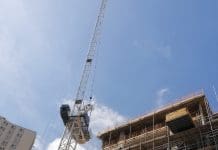The construction industry is at the forefront of global sustainability efforts, with Building Energy Efficiency Retrofitting (BEER) playing a crucial role in achieving net-zero targets
A recent study published in the Journal of Building Engineering explores the success factors of tertiary building energy efficiency retrofitting projects. The study addresses a critical knowledge gap in the field—determining which Energy Efficiency Measures (EEMs) or combinations thereof are most effective in reducing energy consumption and greenhouse gas (GHG) emissions.
This article distils the research findings into key insights for construction professionals, including project managers, building owners, and policymakers, providing actionable recommendations for the successful implementation of BEER projects.
Why energy efficiency retrofitting matters
Buildings account for 30% of global energy use and 27% of energy-related GHG emissions. In many advanced economies, a significant portion of the existing building stock was constructed before energy efficiency standards became mandatory, leading to inefficient energy consumption. Retrofitting these buildings with modern energy-efficient technologies is essential to achieving global decarbonisation targets.
However, the current BEER project implementation rate remains below 1% per year, significantly lagging behind what is required to meet the Paris Agreement’s goal of net-zero emissions by 2050. This highlights the urgent need for identifying the success factors that drive energy efficiency improvements in tertiary buildings.
Methodology: Identifying success factors
The study analysed 30 BEER projects in tertiary buildings across the United States and Europe, using Fisher’s exact test and Qualitative Comparative Analysis (QCA) to identify key success factors. The analysis focused on two key success criteria:
- Final Energy Savings (FES) – the percentage reduction in energy consumption post-retrofit.
- GHG Emissions Savings (GES) – the reduction in carbon emissions resulting from energy efficiency improvements.
The study tested eight potential success factors, categorised into:
Energy Efficiency Measures (EEMs):
- Building envelope insulation
- Lighting efficiency upgrades
- Heat pump installation
- Other HVAC system upgrades
- Renewable energy integration
External and contextual factors:
- Presence of incentives
- Recent retrofitting date
- Building type (office vs. educational)
Key findings: What drives successful BEER projects?
1. Building envelope insulation is the most critical factor
The analysis found that building envelope insulation (EEM1-BE)—which includes wall, roof, and floor insulation, as well as high-performance windows/doors—is the single most important success factor for achieving substantial energy savings.
- Insulation alone was found sufficient to achieve 40% final energy savings (FES).
- It was a necessary factor for reaching 65% and 80% FES, meaning projects without insulation improvements struggled to achieve significant savings.
This highlights that improving thermal insulation should be the first priority in any retrofitting project.
2. Heat pump installation yields high energy and carbon savings
Replacing traditional gas boilers with high-efficiency heat pumps (EEM3-HP) emerged as the second most effective success factor.
The study found:
- Strong positive correlations between heat pump installation and achieving 40% and 80% energy savings.
- Heat pumps also played a key role in reducing GHG emissions, particularly when coupled with renewable energy sources.
3. Combinations of EEMs drive the greatest savings
While individual energy efficiency measures are effective, the study found that combining multiple measures was crucial for achieving the highest savings. Notably:
- Projects that combined building envelope insulation + heat pumps consistently achieved 80% FES.
- When adding renewable energy (solar PV or thermal) and HVAC upgrades, savings exceeded 80%.
- The best-performing configurations also incorporated smart lighting systems and daylight strategies, improving both energy efficiency and indoor comfort.
4. Recent retrofitting and incentives enhance project success
The study highlighted the importance of external factors such as government incentives and timing:
- Recent projects (after 2010 in the EU, 2011 in the US) were more likely to achieve higher energy savings due to improved regulatory standards.
- The presence of financial or policy incentives correlated with higher savings, emphasising the need for continued government support and funding for retrofitting projects.
5. Office buildings show greater energy savings than educational buildings
The study revealed that tertiary office buildings tend to achieve higher energy savings than educational buildings. This may be due to:
- More consistent occupancy patterns in offices, making energy-saving interventions more predictable.
- Greater adoption of advanced HVAC and automation systems, which optimise energy usage dynamically.
Recommendations for construction professionals
Based on the findings, here are the key takeaways for construction professionals involved in BEER projects:
-
Prioritise building envelope insulation
- Wall, roof, and floor insulation, along with high-performance windows, should be the first step in any retrofit.
- These improvements alone can deliver 40–50% energy savings.
2. Invest in heat pumps for maximum efficiency
- Replacing old boilers with heat pumps significantly enhances both energy and GHG savings.
- For best results, combine heat pumps with smart controls and renewable energy integration.
3. Adopt a holistic approach: Combine multiple EEMs
- Implementing insulation, heat pumps, HVAC upgrades, lighting efficiency, and renewables together is the most effective strategy.
- Target 80%+ energy savings by ensuring all major energy systems are optimised.
4. Leverage government incentives and policy support
- Seek subsidies, tax credits, and financing programs to offset retrofitting costs.
- Engage with policymakers to advocate for stronger incentives and regulatory support.
5. Plan for smart retrofitting timing
- Retrofitting in phases aligned with renovation cycles can reduce costs.
- Consider future-proofing buildings to accommodate emerging energy technologies.
6. Focus on office buildings for high-impact results
- Office buildings, particularly those built before 2000, are prime candidates for deep energy retrofits.
- Retrofitting strategies should be tailored to occupancy patterns and energy demand profiles.
The path forward for net-zero buildings
The research underscores that energy-efficient retrofitting is essential for meeting net-zero targets, with insulation and heat pumps emerging as the most critical interventions. The key to maximising energy savings lies in implementing comprehensive, multi-measure retrofits, leveraging government incentives, and targeting office buildings for high-impact results.
For construction professionals, these findings provide a clear roadmap for designing and executing successful BEER projects. As the industry moves towards sustainability, embracing these proven success factors will be vital in transforming the built environment and reducing global carbon emissions.
By prioritising building envelope insulation, heat pump adoption, and integrated energy strategies, the construction sector can play a pivotal role in accelerating the transition to net-zero buildings. The time to act is now—start planning your next retrofit with these insights in mind.














